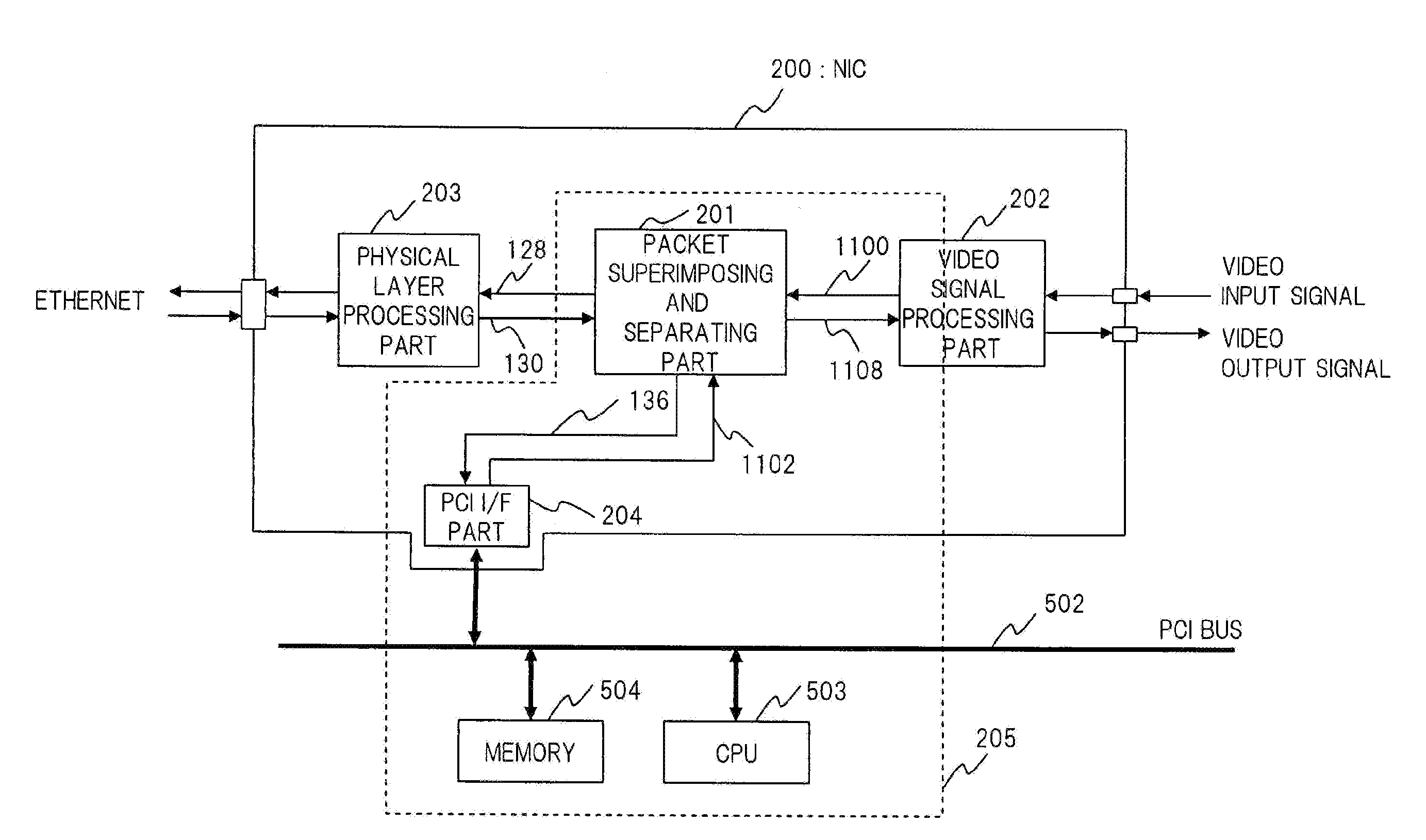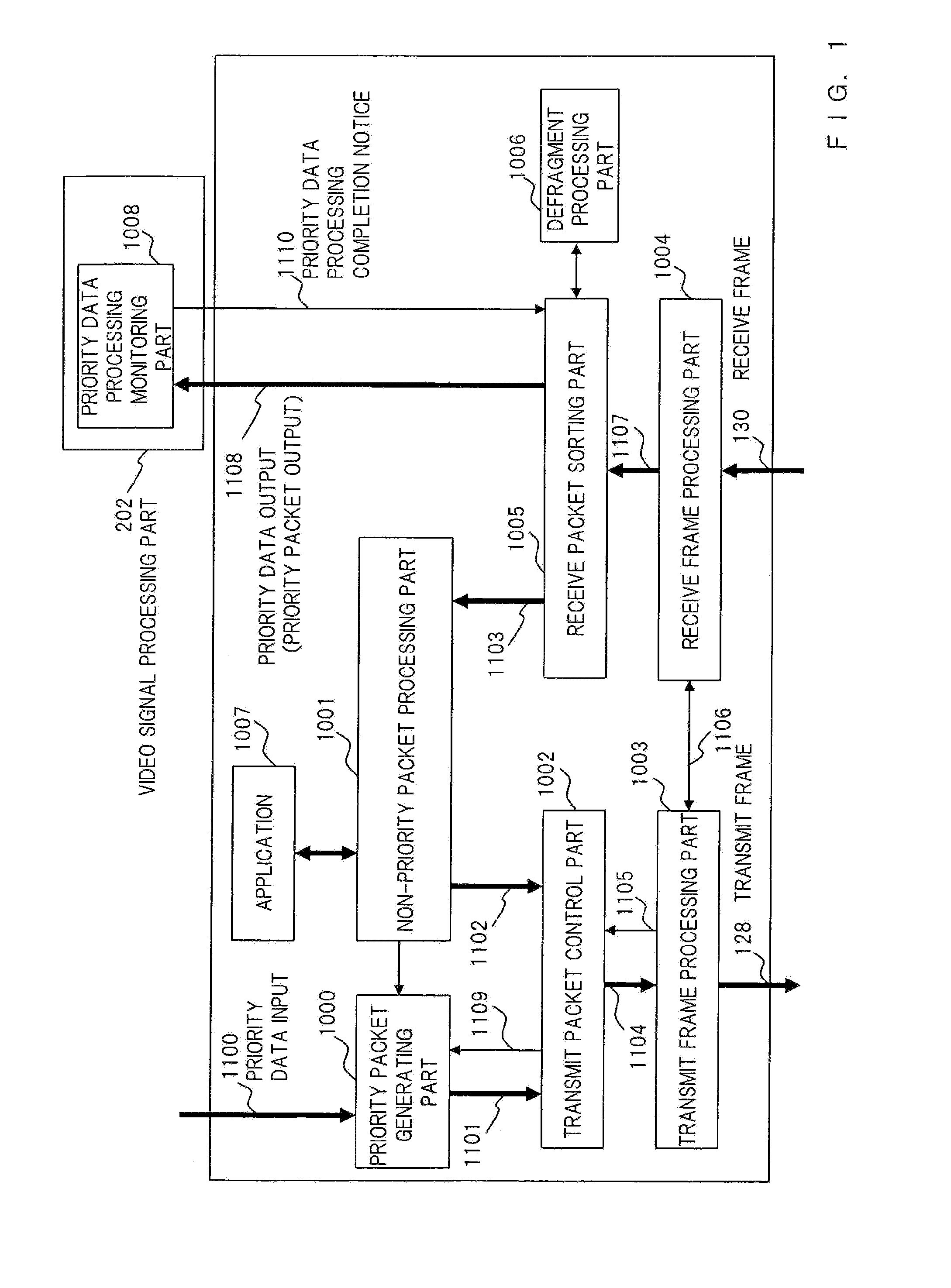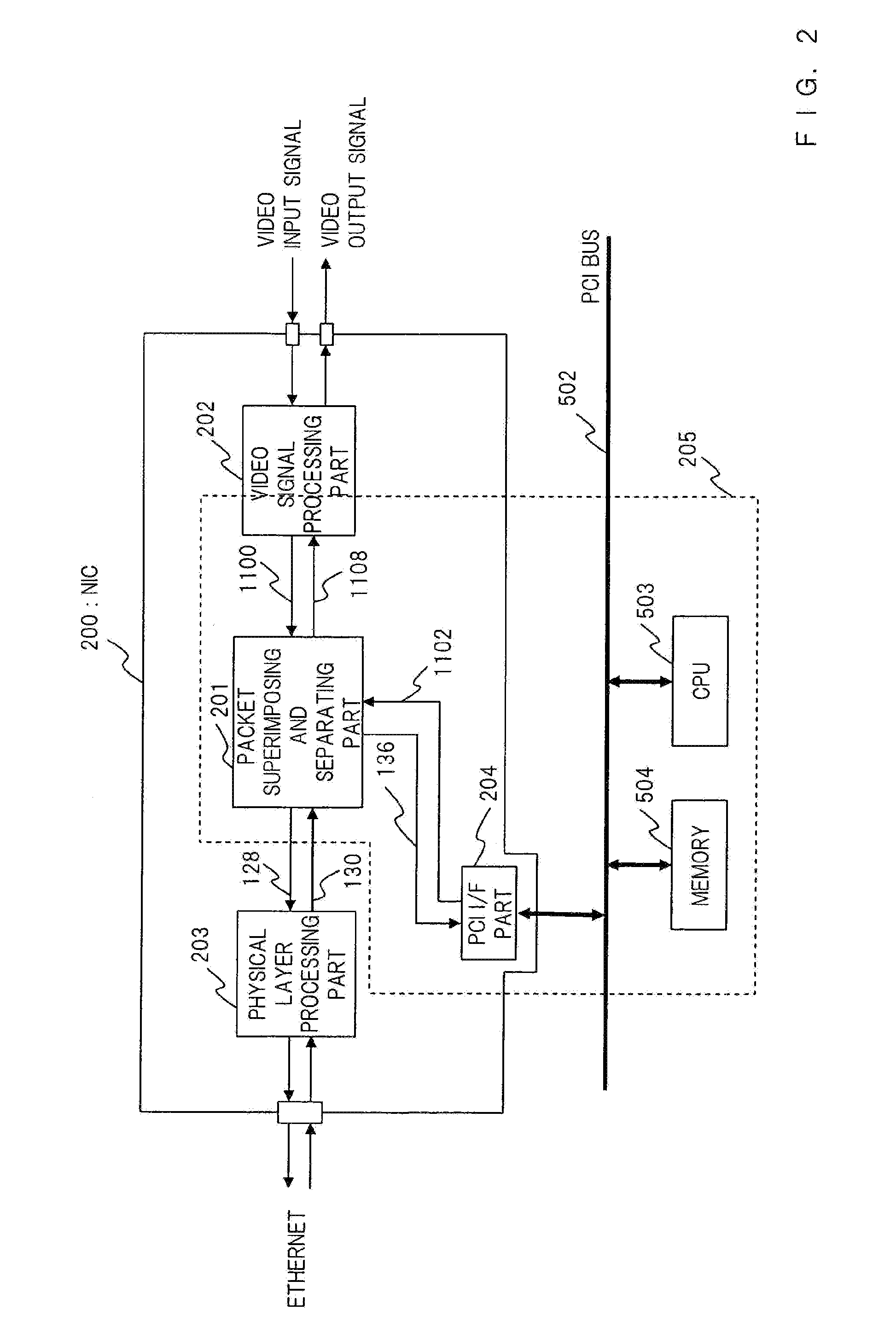Transmission apparatus and transmission method
a transmission apparatus and transmission method technology, applied in the field of transmission apparatus and transmission method, can solve the problems of inability to specifically disclose the control method using the frame display interval, processing cannot keep up with tasks for stream transmission at high-bit rate, and too late real-time processing
- Summary
- Abstract
- Description
- Claims
- Application Information
AI Technical Summary
Benefits of technology
Problems solved by technology
Method used
Image
Examples
first embodiment
[0130]A transmission apparatus and a transmission method in accordance with the first embodiment will be described. The transmission apparatus of the first embodiment shown in FIG. 1 has the priority packet generating part 1000, the non-priority packet generating part 1001, the transmit packet control part 1002 and the transmit frame processing part 1003. In the first embodiment, a transmission system is described.
[0131]In this embodiment, the video data shown in FIG. 3 is input as an input priority data 1100 (shown in also FIG. 2). For stream transmission of video data in real time, the video data need to be processed in preference to data requiring no real-time characteristic.
[0132]In the first embodiment, a transmit margin time is generated by controlling transmission of the priority packet. The “transmit margin time” means the period during which real-time characteristic of priority data stored in the priority packet cannot be impaired even if the non-priority packet is transmit...
second embodiment
[0179]A transmission apparatus and a transmission method in accordance with a second embodiment will be described. In the second embodiment, the transmit system and the receive system is described.
[0180]In carrying out IP transmission, ARP as a protocol for obtaining a physical address (MAC address) of ethernet from a destination IP address is used.
[0181]FIG. 8 is a diagram for showing details of UDP, IP and ethernet protocol headers in accordance with the embodiment of the present invention. In carrying out IP transmission, the transmission apparatus of the embodiment resolves a destination MAC address 8100 from a destination IP address 8011 in FIG. 8 and stores it in the ethernet header 3004 in FIG. 3 to constitute a packet.
[0182]This ARP is performed through two-way communication. Typically, address is resolved by using a processor and a correspondence table of the destination IP address and the destination MAC address is held in the memory. As ARP is not a processing requiring r...
third embodiment
[0190]A transmission apparatus and a transmission method in accordance with the third embodiment will be described. A receive system is described in the third embodiment.
[0191]In FIG. 1, the transmission apparatus of the third embodiment has the receive frame processing part 1004, the receive packet sorting part 1005 and the non-priority packet processing part 1001.
[0192]The receive frame processing part 1004 receives the receive frame 130 in which the priority packet and the non-priority packet exist together from the physical layer processing part 203 in FIG. 2, processes only valid ethernet frame to be received therein and outputs a receive frame 1107.
[0193]The receive packet sorting part 1005 receives input of the receive frame 1107 and sorts it into a priority packet 1108 and a non-priority packet 1103. The method of sorting packets in the receive packet sorting part 1005 will be described below.
[0194]In this embodiment, UDP / IP is used in transmission of the priority packet. Lo...
PUM
 Login to View More
Login to View More Abstract
Description
Claims
Application Information
 Login to View More
Login to View More - R&D
- Intellectual Property
- Life Sciences
- Materials
- Tech Scout
- Unparalleled Data Quality
- Higher Quality Content
- 60% Fewer Hallucinations
Browse by: Latest US Patents, China's latest patents, Technical Efficacy Thesaurus, Application Domain, Technology Topic, Popular Technical Reports.
© 2025 PatSnap. All rights reserved.Legal|Privacy policy|Modern Slavery Act Transparency Statement|Sitemap|About US| Contact US: help@patsnap.com



